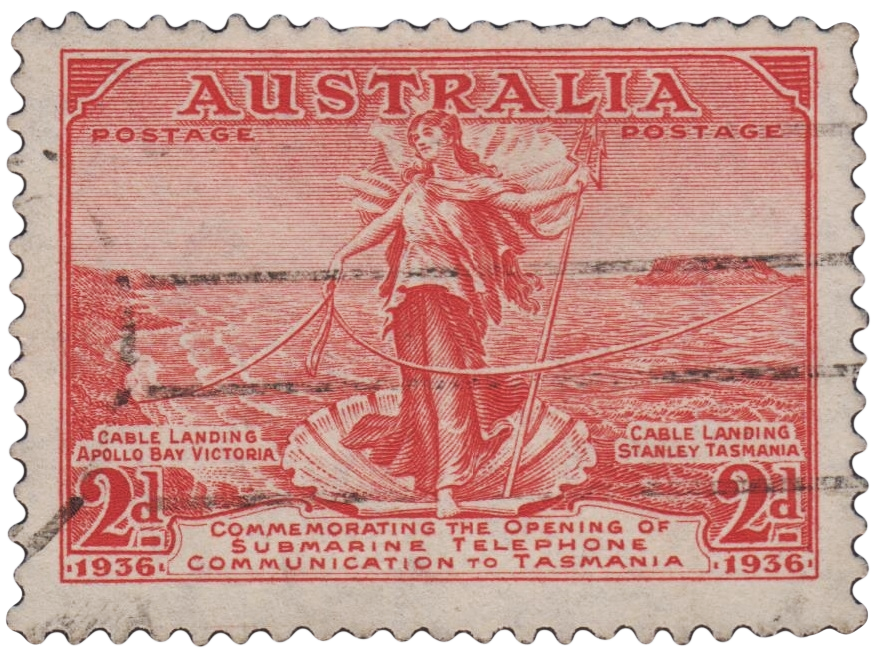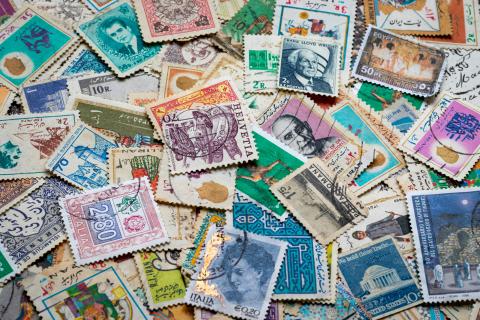From Amphitrite to Kangaroos - the cultural debate on Australian stamp
We asked David Mazitelli from the WA Philatelic Society (PSWA) about the most intriguing story behind a stamp he has come across.
Cultural identity, cultural development and its preservation has been a factor in the design of postage stamps internationally, from the United Kingdom’s Penny Black of 1840 to the present time. This factor was apparent in the design of Australian stamps from the very first Australian stamp issued in 1913.
That stamp comprised a Kangaroo standing inside a map of Australia – known as the Kangaroo and map series. This caused consternation among the monarchists who wished to see the head of King George V displayed. Thus, nationalist/monarchist tensions manifested within the design of Australian stamps.
Another example appeared on 1 April 1936 with the issue of a commemorative stamp celebrating the linkage of Tasmania to the mainland by a submarine telephone cable.
That stamp also attracted a great deal of criticism – especially in the Melbourne press of the time - reflecting an underlying desire to enhance and influence national cultural identity, and possibly in support the view of the Melbourne based monarchists who sought to maintain the predominance of the monarchy within the design of Australian stamps.
The major criticism related to the un-Australian nature of the design – the use of yet another Greek deity in Amphitrite, the wife of Poseidon, Greek god of the seas.

The previous Australian excursion into Greek mythology being the 1/6d Hermes stamp, intended primarily for air-mail use, and issued in 1934.
A leading philatelic journal of that time, the “Australian Stamp Monthly” was adamant that Australian stamps should be characteristically Australian. “Further excursions into the classics”, it said, “will result in our possessing a range of stamps rivalling those of Greece”.
Melbourne’s “Herald” newspaper was less than sanguine, with Basil Burdett, its art critic, attacking the design as an “ambiguous badly drawn Aphrodite (sic)....who sports draperies which are about as elegant as a beggar-woman’s rags”. The paper’s unnamed “fashion expert” opined that “This unhappy sprite was never dressed by the couturiers of ancient Greece – nor did her garments, in spite of the adaptability of modern dressmaking art, come from the salons of Paris, London or New York”. (3)
In response, Mr H P Brown, Director-General of Posts and Telegraphs, retorted that the stamp was “not intended to be a work of art to hang in the Royal Academy, and that it admirably fulfilled its purpose”.
Amphitrite and her Tasmanian Submarine Cable commemoration was swamped just 4 months later, on 3 August 1936, with the issuance of the South Australian Centenary stamp.
While the Greek gods are no more, the tensions that underlay the arguments about design of Australian stamps and their relationship with Australian cultural identity persist to the current day.
AUTHOR: David Mazitelli, PSWA, 2024
Q&A with Dr Bruce Haynes from the WA Philatelic Society
Dr Haynes shares a few insights on his own collecting experiences.
Q1. How does the local philatelic community contribute to preserving Western Australian postal history?
A1: Clubs and philatelists offer an estate service that recycles collections and saves them from landfill. Research on recent postal history creates a public record not available from Australia Post but that does make collecting so much more interesting.
Q2. Could you share a fun fact or lesser-known aspect of stamp collecting that might surprise our audience?
A 2. I have collected Christmas Island and Cocos Island postal history for 50 years. I visited those islands for the first time in 2021 and realised I had never seen any local mail or interisland mail. So I visited businesses and offices asking for discarded envelopes. Apart from puzzled responses, it gave me a good opportunity to meet and understand the locals.
I got some extraordinary mail that had been lying around unopened for 5 years! This added greatly to the interest of the trip. It also showed again that the best way to collect is to concentrate on something no-one else is collecting.
Q.3. What makes stamp collecting a timeless hobby and continue to thrive?
A3. Stamp collecting and postal history have different attractions. Survival of the hobby as a solitary activity is difficult with a generation who has never posted a letter. Survival as a social activity is more likely due to the positive features of interaction and helping others build something of interest to themselves and others.
AUTHOR: DR BRUCE HAYNES, PSWA, 2024
